Articles Relevant to You
Our diverse articles offer you the best tips and guidance to develop your professional skills and stay informed about the latest trends.
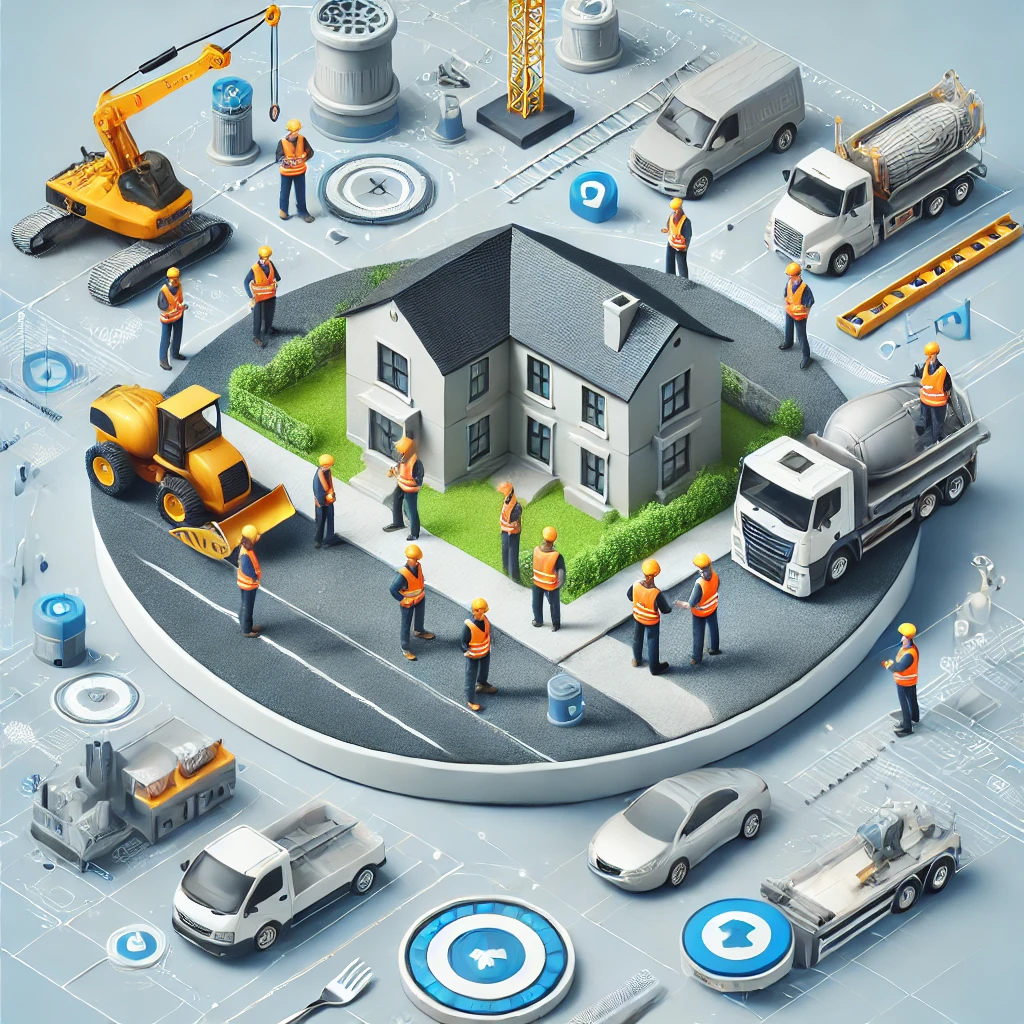
Essentials for Choosing a Reliable Contractor
Choosing a reliable contractor is a critical step in ensuring the success of your construction project. Here are some key points to guide your decision:
First, check the contractor’s track record and experience. Ask to see examples of previous projects to evaluate their quality and standards.
Second, review client testimonials and references. Hearing about the experiences of past clients can give you valuable insights into the contractor's reliability.
Third, make sure the contractor has access to the necessary resources and modern equipment. A well-equipped company will likely deliver better results.
Additionally, discuss pricing and timelines upfront to ensure transparency and adherence to schedules.
Lastly, communication is crucial. Opt for a contractor with a professional team that listens to your needs and offers innovative solutions tailored to your project goals.

The benefits of regular building maintenance for achieving sustainability
Preventive maintenance is not just a routine procedure; it is a smart investment in the future of the building. It acts as a safety net that protects the building from unpleasant surprises and ensures smooth operational continuity. By closely monitoring every part of the building and taking necessary actions in a timely manner, it guarantees that the building remains in its best condition, enhancing its value and achieving a high return on investment.
Thanks to technological advancements, preventive maintenance has become smarter and more precise than ever. By using the latest technologies in analysis and prediction, we can detect potential issues before they develop into major failures. This means we can take effective preventive measures, significantly reducing costs and improving the building's performance.
In this article, we will explore together the benefits of regular building maintenance by adopting the latest preventive trends. Stay with us.
Contents of the article
Periodic maintenance procedures for buildings.
The benefits of regular building maintenance.
The latest trends in building maintenance.
Periodic maintenance procedures for buildings
The design and implementation of the preventive program is a strategic process that requires meticulous planning and precise execution to ensure the maintenance of the quality of buildings and facilities and to enhance their operational efficiency. This program is not limited to repairing faults when they occur, but rather focuses on preventing them from the outset through proactive measures. The design and implementation of the program include several key stages, including:
Design and implementation of a comprehensive preventive maintenance program
The path to more efficient and longer-lasting buildings is essential for preserving property assets and ensuring optimal performance over the long term. Designing and implementing a comprehensive preventive maintenance program requires a thorough assessment of the building's needs, prioritization, detailed scheduling, assigning a qualified workforce, and adopting the latest technologies.
Expanding the needs assessment
Property life cycle analysis: The expected lifespan and current condition of the property must be assessed to prioritize maintenance.
Study of historical records: Analyzing previous malfunctions in the property and their recurrence to identify the most vulnerable parts and take preventive measures.
Environmental risk assessment: Identifying potential environmental risks, such as erosion, leaks, and the impact of weather factors, and taking necessary actions to mitigate them.
Setting a flexible schedule
The maintenance schedule should be flexible and adjustable to accommodate any changes that may occur in the building. Administrative software can be used to facilitate the scheduling process and task tracking.
Types of schedules: Explanation of the different types of schedules (weekly, monthly, yearly) and how to choose the most suitable one for each part of the building.
Factors affecting the schedule: Discussion of the factors that influence the determination of maintenance frequency, such as intensive use, environmental conditions, and manufacturer recommendations.
Specialized team
Training the specialized team: Emphasizing the importance of training the team on the latest technologies and methods.
Setting performance indicators: Establishing specific performance indicators to measure the team's efficiency and evaluate their performance.
Developing contingency plans: Creating contingency plans to handle unexpected failures and reduce downtime.
Modern technologies are the foundation of preventive maintenance.
Artificial Intelligence and the Internet of Things: Discussing the role of artificial intelligence and the Internet of Things in improving processes, such as predictive failure analysis and self-maintenance.
Virtual reality and augmented reality: Explanation of how to use these technologies in training and troubleshooting.
Cybersecurity: Emphasizing the importance of protecting maintenance systems from cyber intrusions.
Maintenance management programs (the ideal partner)
Comparison between programs: A comparison between the various available management programs and identifying the features to look for when choosing the right program.
Program integration: Discussing how to integrate maintenance management programs with other systems, such as building management systems, to achieve maximum benefit.
Return on Investment Evaluation: Calculating the Expected Return on Investment in Maintenance Management Programs.
Benefits of regular building maintenance
Preventive maintenance, as a proactive strategy for asset preservation, is considered a smart investment that ensures the efficiency and safety of buildings in the long term by anticipating and addressing problems before they escalate. It also contributes to achieving several benefits, including:
1. Extending the lifespan of the property: Imagine the building as a complex machine that requires continuous care; preventive maintenance acts as regular servicing for this machine, prolonging the lifespan of its various components. By replacing damaged parts and fixing minor faults before they escalate, the need for comprehensive and costly renovations is delayed.
2. Improving operational efficiency: Buildings that undergo preventive maintenance operate more efficiently. Systems and equipment that are regularly maintained function at full capacity, leading to reduced energy and water consumption. Additionally, the optimal performance of the systems translates into a more comfortable environment for users.
3. Reducing overall costs: Preventive maintenance costs may seem high, but they actually save a lot of money in the long run. Instead of paying hefty costs to repair sudden breakdowns, the expenses can be spread over longer periods. Additionally, avoiding unplanned downtime maintains business continuity and reduces financial losses.
4. Enhancing safety and security: Preventive maintenance significantly contributes to creating a safe environment. By regularly inspecting electrical systems, fire suppression systems, and mechanical systems, potential hazards can be identified and addressed before they cause accidents or injuries.
5. Increasing property value: Well-maintained buildings have a higher market value. Potential buyers prefer buildings that are well-maintained and do not require major repairs.
6. Improving the institution's image: Buildings that operate efficiently and safely reflect a positive image of the institution. Customers and visitors feel comfortable and secure in well-maintained buildings.
7. Environmental sustainability: It contributes to achieving environmental sustainability by reducing waste.

How to Choose the Best Landscaping Services for Your Home
Landscaping transforms outdoor spaces into aesthetically pleasing and functional areas, enhancing your home’s appeal and value.
First, identify your goals. Are you looking for a green garden or a family-friendly relaxation space? Clear goals will guide the design process.
Second, choose plants that are suitable for the local climate and require minimal maintenance for long-term convenience.
Third, invest in professional landscape design services. Specialists can create a harmonious balance between beauty and functionality.
Don’t forget to consider efficient irrigation systems to conserve water and reduce upkeep.
Finally, ensure the use of sustainable materials, such as natural stones and treated wood, to align with modern environmental standards.
A well-executed landscape design not only beautifies your home but also adds significant investment value.

The importance of sustainability in construction projects in Saudi Arabia
In the dynamic and ever-evolving environment that Saudi Arabia is experiencing in the
construction sector, where developments are accelerating and major transformations are occurring at an unprecedented pace, maintaining leadership in the industry is a significant challenge that requires excellence and innovation. At Asas Al-Qimma, we fully recognize the importance of this critical phase, and we are pleased to be at the forefront of leading this change by sharing the latest trends and innovations that are redefining the contracting sector in the Kingdom.
Through this article, we will take you on an exploratory journey to highlight the modern technologies we rely on to achieve a qualitative leap in this field. These technologies are not just tools; they are fundamental pillars for building a more efficient and sustainable future. We believe that adopting these innovations will contribute to creating new opportunities and raising the level of quality, thereby enhancing the Kingdom's position as one of the most advanced countries in the construction sector worldwide.
Join us to learn together how to turn challenges into opportunities and how innovation can be the main driver of excellence in an environment characterized by rapid change and intense competition.
Contents of the article
Leveraging digital transformation in the construction field
Sustainable construction technologies
The importance of applying sustainability in construction
Leveraging digital transformation in the construction sector
In light of the rapid developments taking place in the Kingdom of Saudi Arabia, digital transformation stands out as one of the most important trends reshaping the construction sector. Modern technology has become pivotal in improving project efficiency, from the planning stage to delivery and operation. Below, we review how these technologies contribute to enhancing this vital sector:
Construction management software
Construction management programs offer a comprehensive solution for project managers, as they assist in:
Improving resource allocation through data analysis and more effective task distribution.
Real-time monitoring: Providing a comprehensive view of project progress, enhancing transparency, and facilitating decision-making.
Reducing manual tasks: eliminating repetitive burdens, allowing teams to focus on strategic aspects.
Digital integration
Digital tools and technologies have become a fundamental pillar for achieving success, and digital integration contributes to connecting all stakeholders in the project, including:
Architects: Ensuring effective coordination between design and execution.
Contractors and suppliers: Simplifying purchasing and inventory management.
Clients: Providing continuous updates in project management.
Data sharing platforms: To facilitate real-time communication, reducing delays and improving coordination efforts.
Advanced digital tools
Advanced software helps improve the quality of processes and make decisions with the highest accuracy through:
Big data analysis: anticipating potential challenges and developing proactive plans.
Building Information Modeling (BIM): Creating accurate 3D models that facilitate planning and execution.
Artificial intelligence technologies: improving scheduling and reducing costs.
Lean Principles
These principles are gaining increasing attention in the construction sector in Saudi Arabia, where adopting these principles is considered a strategic step towards enhancing operational efficiency and reducing costs in construction projects. This approach contributes to:
Enabling work teams to conduct precise project analyses, allowing for the identification and proactive resolution of discrepancies.
Avoid the negative effects that may result from these imbalances, which can hinder the project's progress.
Teams can reduce waste resulting from repetitive or unnecessary tasks, thereby enhancing the optimal use of available resources.
Improving coordination between different departments reduces task conflicts and ensures projects are completed on time and within budget.
This approach fosters a culture of continuous improvement within teams, where employees are encouraged to propose innovative solutions to enhance processes.
In general, applying lean management principles in the Saudi construction sector is a proactive approach to achieving operational excellence, as it helps in achieving project goals with higher efficiency and lower costs while maintaining the quality of the final outputs.
Sustainable construction technologies
In line with Vision 2030, we at the Summit Foundation are working towards building a more sustainable future. We believe that green construction is a fundamental pillar in achieving this ambitious vision. Through the use of eco-friendly materials and innovative designs, and among these technologies:
Standard construction
Modular construction is redefining the construction industry. By assembling prefabricated components off-site, we offer innovative solutions that significantly accelerate project timelines. At Qimma, we invest in the latest technologies to ensure manufacturing precision and installation quality, making modular construction the ideal solution for projects that require speed without compromising quality.
Building Information Modeling (BIM)
The construction sector in the Kingdom of Saudi Arabia has witnessed significant development thanks to Building Information Modeling (BIM) technology, which has become an essential part of achieving integration and collaboration among various parties involved in projects. Through this revolutionary technology, it has become possible to integrate 3D data with utmost precision, allowing for accurate project planning, reducing errors, and minimizing rework costs. Asas Al-Qimma Company believes in the importance of this technology in achieving the Kingdom's ambitious vision, as it contributes to improving the stages of design and planning, enhancing construction management, and extending to the operation and maintenance phase of buildings. Thanks to the comprehensive virtual vision provided by this technology, communication between different teams has become easier, contributing to informed decision-making and accelerating project completion.
Modern safety procedures
Safety is our top priority in the Saudi construction sector, and at Asas Al-Qimma Company, we elevate safety standards to new heights. We rely on the latest smart technologies, such as drones and AI surveillance systems, to provide a safe working environment for all workers.

A journey into the world of construction from design to finishing and decoration
In the dynamic and ever-evolving environment that Saudi Arabia is experiencing in the construction sector, where developments are accelerating and major transformations are occurring at an unprecedented pace, maintaining leadership in the industry is a significant challenge that requires excellence and innovation. At Asas Al-Qimma, we fully recognize the importance of this critical phase, and we are pleased to be at the forefront of leading this change by sharing the latest trends and innovations that are redefining the contracting sector in the Kingdom.
Through this article, we will take you on an exploratory journey to highlight the modern technologies we rely on to achieve a qualitative leap in this field. These technologies are not just tools; they are fundamental pillars for building a more efficient and sustainable future. We believe that adopting these innovations will contribute to creating new opportunities and raising the level of quality, thereby enhancing the Kingdom's position as one of the most advanced countries in the construction sector worldwide.
Join us to learn together how to turn challenges into opportunities and how innovation can be the main driver of excellence in an environment characterized by rapid change and intense competition.
Contents of the article
Leveraging digital transformation in the construction field.
Sustainable construction technologies.
The importance of applying sustainability in construction.
Leveraging digital transformation in the construction sector
In light of the rapid developments taking place in the Kingdom of Saudi Arabia, digital transformation stands out as one of the most important trends reshaping the construction sector. Modern technology has become pivotal in improving project efficiency, from the planning stage to delivery and operation. Below, we review how these technologies contribute to enhancing this vital sector:
Construction management software
Construction management programs offer a comprehensive solution for project managers, as they assist in:
Improving resource allocation through data analysis and more effective task distribution.
Real-time monitoring: Providing a comprehensive view of project progress, enhancing transparency, and facilitating decision-making.
Reducing manual tasks: eliminating repetitive burdens, allowing teams to focus on strategic aspects.
Digital integration
Digital tools and technologies have become a fundamental pillar for achieving success, and digital integration contributes to connecting all stakeholders in the project, including:
Architects: Ensuring effective coordination between design and execution.
Contractors and suppliers: Simplifying purchasing and inventory management.
Clients: Providing continuous updates in project management.
Data sharing platforms: To facilitate real-time communication, reducing delays and improving coordination efforts.
Advanced digital tools
Advanced software helps improve the quality of processes and make decisions with the highest accuracy through:
Big data analysis: anticipating potential challenges and developing proactive plans.
Building Information Modeling (BIM): Creating accurate 3D models that facilitate planning and execution.
Artificial intelligence technologies: improving scheduling and reducing costs.
Lean Principles
These principles are gaining increasing attention in the construction sector in Saudi Arabia, where adopting these principles is considered a strategic step towards enhancing operational efficiency and reducing costs in construction projects. This approach contributes to:
Enabling work teams to conduct precise project analyses, allowing for the identification and proactive resolution of discrepancies.
Avoid the negative effects that may result from these imbalances, which can hinder the project's progress.
Teams can reduce waste resulting from repetitive or unnecessary tasks, thereby enhancing the optimal use of available resources.
Improving coordination between different departments reduces task conflicts and ensures projects are completed on time and within budget.
This approach fosters a culture of continuous improvement within teams, where employees are encouraged to propose innovative solutions to enhance processes.
In general, applying lean management principles in the Saudi construction sector is a proactive approach to achieving operational excellence, as it helps in achieving project goals with higher efficiency and lower costs while maintaining the quality of the final outputs.
Sustainable construction technologies
In line with Vision 2030, we at the Summit Foundation are working towards building a more sustainable future. We believe that green construction is a fundamental pillar in achieving this ambitious vision. Through the use of eco-friendly materials and innovative designs, and among these technologies:
Standard construction
Modular construction is redefining the construction industry. By assembling prefabricated components off-site, we offer innovative solutions that significantly accelerate project timelines. At Qimma, we invest in the latest technologies to ensure manufacturing precision and installation quality, making modular construction the ideal solution for projects that require speed without compromising quality.
Building Information Modeling (BIM)
The construction sector in the Kingdom of Saudi Arabia has witnessed significant development thanks to Building Information Modeling (BIM) technology, which has become an essential part of achieving integration and collaboration among various parties involved in projects. Through this revolutionary technology, it has become possible to integrate 3D data with utmost precision, allowing for accurate project planning, reducing errors, and minimizing rework costs. Asas Al-Qimma Company believes in the importance of this technology in achieving the Kingdom's ambitious vision, as it contributes to improving the stages of design and planning, enhancing construction management, and extending to the operation and maintenance phase of buildings. Thanks to the comprehensive virtual vision provided by this technology, communication between different teams has become easier, contributing to informed decision-making and accelerating project completion.
Modern safety procedures
Safety is our top priority in the Saudi construction sector, and at Asas Al-Qimma Company, we elevate safety standards to new heights. We rely on the latest smart technologies, such as drones and AI surveillance systems, to provide a safe working environment for all workers.
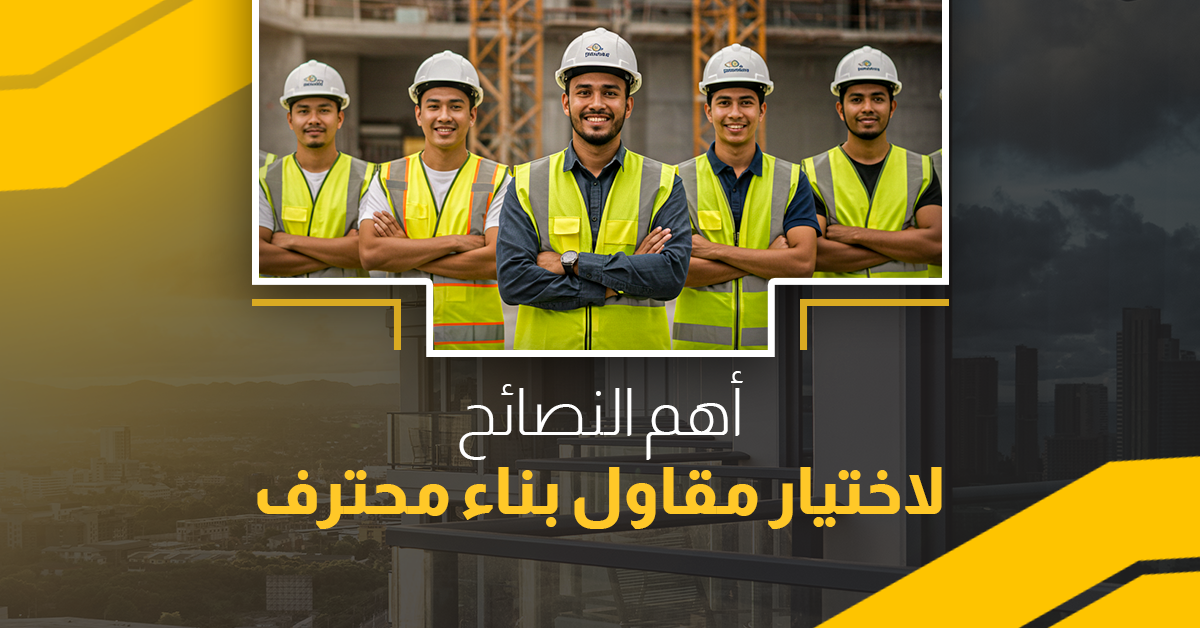
Top Tips for Choosing a Professional Construction Contracto
Choosing a Construction Contractor: Key Factors for Success in Saudi Arabia
Selecting a construction contractor is one of the most critical decisions that directly impact the success of any project in Saudi Arabia’s construction sector. Whether you’re planning to build a home, a commercial project, or investing in infrastructure developments, hiring a qualified and reliable contractor ensures that your project is executed to the highest standards with minimal risks. In this article, we will explore the essential factors to consider when choosing the right contractor for your project.
Verifying Licenses and Certifications
Before signing any contract, it is crucial to confirm that the contractor holds the necessary legal licenses to operate in Saudi Arabia. A licensed contractor is required to adhere to Saudi building regulations, ensuring compliance with technical and engineering standards. Additionally, a contractor classification certificate provides insight into the contractor’s expertise and the types of projects they are qualified to handle.
You should also check the contractor’s history to ensure there are no legal issues or complaints against them. This can be done by consulting relevant authorities or reviewing customer feedback and ratings.
Reviewing Past Projects and Work Quality
Having an official license is not enough; the contractor should also have a strong track record of successful projects. Review previous projects they have completed, whether residential buildings, commercial structures, or infrastructure developments.
If possible, visit some of their completed sites or examine detailed photos showcasing finishing quality and materials used. Pay attention to construction quality, finishes, and adherence to modern engineering standards. Positive client reviews are a strong indicator of the contractor’s professionalism.
Ensuring High-Quality Building Materials
The use of high-quality local building materials plays a major role in the durability and strength of a structure. Ensure that the contractor uses materials that meet the required technical specifications, such as high-strength reinforced concrete, fire-resistant bricks, galvanized steel, and thermal and moisture-resistant insulation materials.
It’s advisable to request a list of suppliers the contractor relies on and verify that the materials come from reputable sources. Using substandard materials can lead to future structural issues, such as cracks or weakened integrity, resulting in costly repairs.
Setting a Clear Project Timeline
Effective construction project management is essential to avoid delays. When selecting a contractor, make sure they provide a detailed project timeline outlining different construction phases and their expected completion dates.
Don’t rely on verbal promises—request a written schedule with all necessary details. It is also important to agree on how to handle potential delays, whether through financial penalties or schedule adjustments to minimize disruptions to the project.
Adhering to Safety Regulations on Construction Sites
Safety at construction sites is not optional—it is essential to protect workers and the project itself. Ensure that the contractor complies with all required safety measures, such as providing personal protective equipment (PPE) for workers, installing warning signs in hazardous areas, and following safety regulations set by the relevant authorities.
Neglecting safety standards can lead to serious accidents, project delays, financial losses, or even legal issues. Therefore, it is essential to ensure that the contractor takes safety matters seriously.
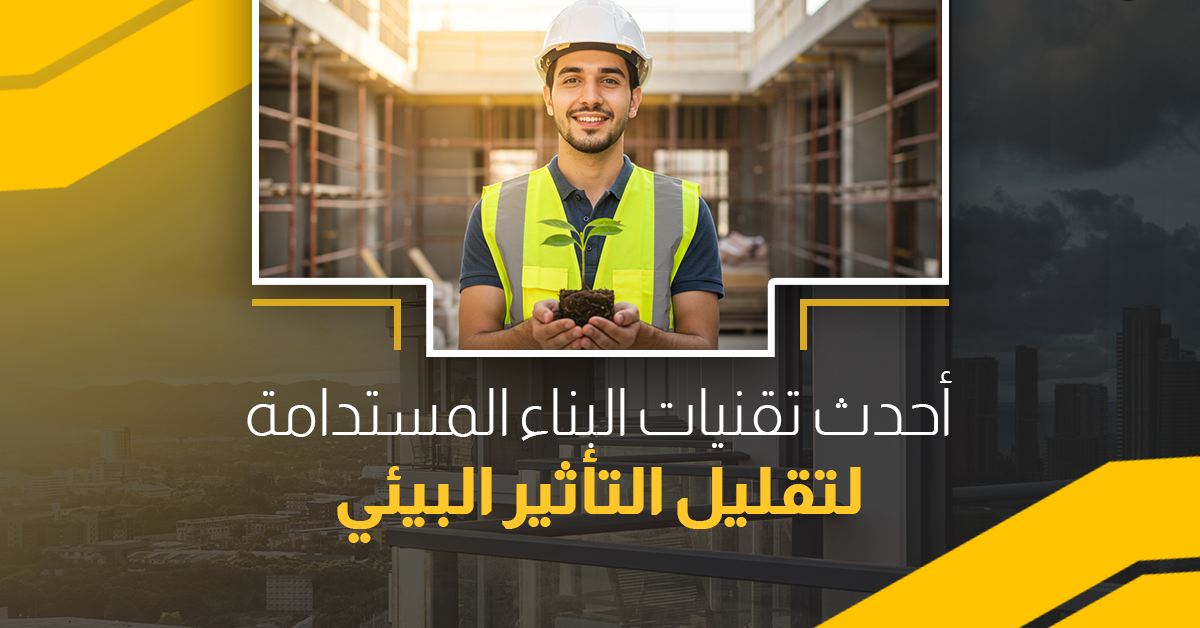
The Latest Sustainable Construction Technologies to Reduce Environmental Impact
With the rapid advancements in Saudi Arabia’s construction sector, the focus on sustainable building technologies has become a pressing necessity to ensure a more efficient and environmentally friendly future. Today, Saudi construction companies are implementing innovative solutions aimed at reducing the environmental impact of construction projects while adhering to Saudi building standards to ensure quality and safety.
This article highlights the latest modern construction technologies that contribute to sustainability, reduce resource consumption, and lower construction costs in Saudi Arabia, with a focus on the role of technology and renewable materials in creating a greener future for the construction industry.
1. What is Sustainable Construction?
Sustainable construction is an approach that focuses on using technologies and materials that minimize environmental impact while improving energy and water efficiency. These techniques aim to balance urban expansion with the preservation of natural resources, aligning with Saudi Vision 2030, which prioritizes sustainability as a key pillar of Saudi infrastructure projects.
2. The Latest Sustainable Construction Technologies
2.1. Smart Buildings and IoT Technologies
Smart buildings are one of the most advanced modern construction technologies, utilizing Internet of Things (IoT) systems to monitor energy and water consumption automatically, reducing waste and enhancing operational efficiency.
Examples of smart building applications:
Intelligent lighting and air conditioning systems that adjust based on occupancy.
Smart sensors that detect humidity and temperature levels to optimize energy consumption.
2.2. 3D Printing in Construction
3D printing is revolutionizing construction project management by enabling the creation of entire building units using local and sustainable materials, reducing material waste and improving time efficiency.
Benefits of 3D printing in construction:
Reducing construction costs in Saudi Arabia by minimizing material usage.
Accelerating building processes compared to traditional methods.
2.3. Sustainable Concrete and Recycled Materials
Sustainable concrete has become an ideal alternative to traditional concrete, incorporating recycled materials such as fly ash and industrial slag, which help reduce carbon emissions.
Examples of sustainable building materials:
Treated wood: An eco-friendly alternative to traditional concrete and bricks.
Smart bricks: Made from recycled materials, offering thermal insulation and energy efficiency.
3. The Role of Sustainable Construction Technologies in Saudi Infrastructure Projects
With the shift toward smart and sustainable cities, Saudi Arabia increasingly relies on national construction standards that promote innovative building solutions to reduce environmental impact.
Key sustainable infrastructure projects:
The Line Project in NEOM: Features an integrated architectural design utilizing clean energy while minimizing emissions.
The Red Sea Project: A prime example of using local building materials and modern technologies to protect the environment.
4. The Impact of Sustainability on Construction Site Safety
Sustainability plays a vital role in enhancing safety at construction sites, as modern technologies help reduce risks and improve working conditions.
Key technologies improving safety:
Smart robots: Reduce human involvement in hazardous tasks.
Drones: Used for site monitoring and data analysis to ensure compliance with safety regulations.
5. Challenges in Implementing Sustainable Construction Technologies
Despite the numerous benefits of sustainable construction, several challenges hinder its adoption in the Saudi market, including:
High initial costs for some innovative solutions.
The need for workforce training and qualification to use modern technologies.
Limited availability of certain sustainable materials compared to traditional ones.
6. The Future of Sustainable Construction in Saudi Arabia
With the rapid advancement of Saudi infrastructure projects and growing environmental awareness, the sector is increasingly adopting modern construction technologies as part of sustainable solutions.
Key predictions for the future of sustainable construction:
Greater reliance on renewable energy in new buildings.
Development of stronger legal frameworks to support sustainable construction project management.
Integration of artificial intelligence to enhance construction efficiency and architectural design.
Article Summary
Saudi construction companies are leveraging the latest modern construction technologies to ensure project sustainability and reduce environmental impact. Through methods such as 3D printing, smart buildings, and recycled materials, these innovations help lower construction costs in Saudi Arabia while achieving the highest safety and quality standards. As construction project management continues to evolve, the future of Saudi Arabia’s construction sector is set to be more sustainable and efficient.
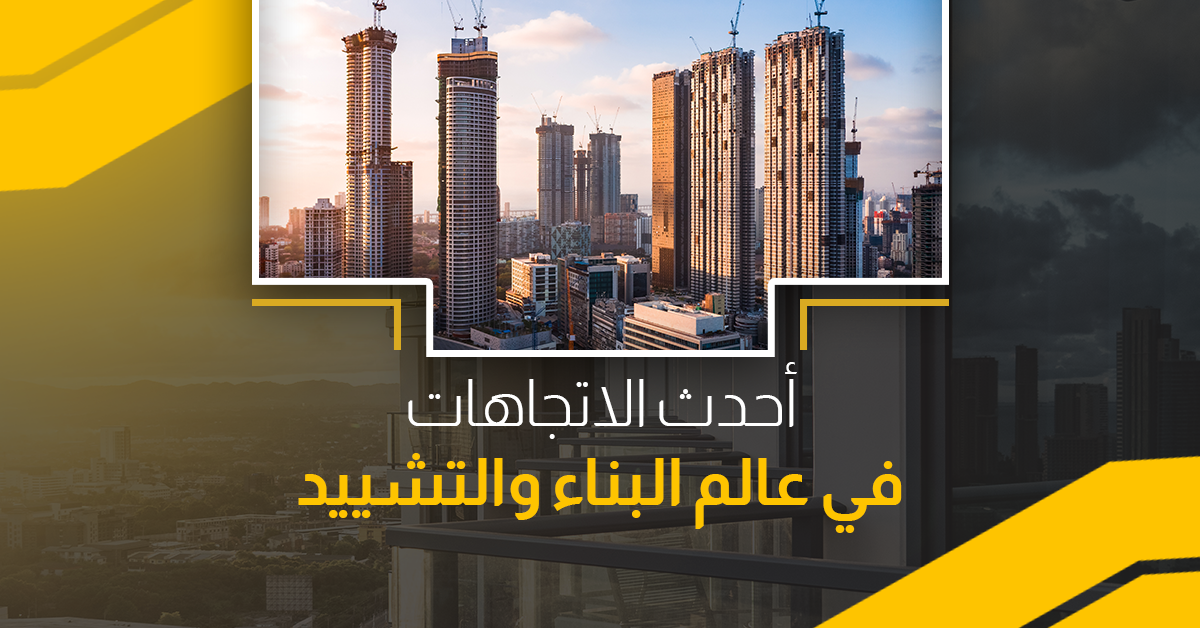
The latest trends in the world of construction and building.
The construction and building sector in Saudi Arabia is one of the most important economic sectors, witnessing continuous development to keep up with rapid urban growth and technological advancement. With increasing demand for housing projects and real estate development, Saudi construction companies are striving to adopt the latest trends and technologies to enhance efficiency, reduce costs, and achieve sustainability. In this article, we will discuss the most prominent modern trends shaping the future of the construction sector, focusing on building standards in Saudi Arabia, the development of Saudi infrastructure projects, and the role of modern construction technologies in improving project quality.
1. Sustainable Construction and Energy Efficiency
Construction in Saudi Arabia is increasingly shifting towards sustainability, with new projects aimed at reducing the environmental impact of buildings and improving energy consumption efficiency. Modern Saudi architectural design relies on using eco-friendly materials, such as locally sourced recyclable building materials, insulated glass, and thermal insulation systems that reduce energy consumption for heating and cooling. It has also become common to integrate renewable energy solutions, such as solar panels and natural ventilation techniques, to reduce reliance on traditional energy sources.
2. Modern Construction Technologies and Process Automa
With the advancement of construction project management, modern construction technologies have emerged to improve execution speed and design accuracy. One of the most prominent technologies is 3D printing, which allows for faster and more cost-effective construction of structures, thereby enhancing project efficiency. Robotics and artificial intelligence also play a crucial role in improving operational processes and reducing human errors, increasing safety levels on construction sites. Additionally, Building Information Modeling (BIM) technology is used for precise building design, cost estimation, and risk assessment before project execution.
2.1 3D Printing: A Revolution in the Construction Industry
3D printing has become one of the most advanced modern construction technologies in recent years, enabling the rapid and highly efficient construction of architectural structures. This technology utilizes specialized robots to print successive layers of materials such as concrete or reinforced plastic to create walls and building components with extreme precision. The benefits of 3D printing include reducing material waste, lowering construction costs in Saudi Arabia, and speeding up construction processes compared to traditional methods. It also allows for the design of complex architectural forms that were previously difficult to execute, opening up new creative possibilities in Saudi architectural design.
2.2 Building Information Modeling (BIM): Smarter Project Management
Building Information Modeling (BIM) is a core tool used by Saudi construction companies to improve the management of construction projects. This technology involves creating a comprehensive digital model of a building that includes all structural, architectural, and mechanical details, allowing engineers and contractors to plan efficiently and avoid potential errors before execution. BIM technology helps improve communication between all parties involved in the project, reduce costs by identifying engineering problems early, and enhance building standards in Saudi Arabia. It also allows for simulating building performance over time, enabling the evaluation of energy efficiency and improving design to ensure building sustainability and achieve the highest levels of efficiency and quality.
3. Focus on Safety on Construction Sites
With the rise of large-scale projects, improving safety on construction sites has become a top priority for Saudi construction companies. Advanced monitoring systems, such as smart cameras and drones, are being adopted to track work progress and ensure compliance with safety standards. Additionally, training programs are being developed for workers and supervisors to ensure proper handling of equipment and reduce the risk of accidents. Personal protective systems, such as smart helmets and safety boots equipped with sensors that alert workers to potential dangers, are also being implemented.
4. Smart Buildings and the Internet of Things (IoT)
Saudi infrastructure projects are moving towards smart buildings that rely on the Internet of Things (IoT) to manage energy, security, and operations more efficiently. This technology allows for real-time monitoring of building performance, with smart sensors used to track energy consumption and automatically control lighting and air conditioning systems based on the presence of people inside the building. These technologies also help improve security through smart surveillance systems that detect and address potential risks immediately.
4.1 **Integration of IoT in Smart Buildings**
The Internet of Things (IoT) has become an essential element in construction and building in Saudi Arabia, helping transform traditional buildings into smart structures that can interact with the surrounding environment and improve operational efficiency. This technology relies on installing advanced sensors and smart systems to control lighting, air conditioning, security, and energy consumption, reducing operational costs and improving user experience. For example, smart buildings can automatically control temperature based on the number of people in a room or send instant notifications when maintenance is needed, ensuring the building's sustainability and reducing costs associated with emergency breakdowns.
Moreover, IoT technologies contribute to improving safety on construction sites by monitoring environmental conditions and detecting potential risks such as gas leaks or high temperatures, reducing accidents and ensuring a safer working environment. The integration of IoT with construction project management also allows contractors to collect and analyze data in real time, helping make informed decisions and achieve the highest levels of efficiency in executing Saudi infrastructure projects.
5. **Local Building Materials and Architectural Innovations**
Saudi construction companies rely on local building materials for many projects, contributing to supporting the local economy and reducing logistics costs. With the evolution of Saudi architectural design, natural materials such as Saudi stone and treated wood are used to create modern designs that reflect the Kingdom's local identity. Additionally, traditional engineering elements are integrated with modern innovations to create durable and sustainable buildings capable of withstanding climate changes in the Kingdom.
6. **Reducing Construction Costs and Improving Execution Efficiency**
Construction costs in Saudi Arabia have become an important element in planning any project, as Saudi construction companies strive to reduce costs without compromising quality. This is achieved through techniques such as prefabrication, which allows parts of the building to be prepared in factories and then assembled on-site, reducing construction time. Modern software is also used to manage construction projects, providing accurate analyses of material and labor costs, helping with precise financial planning and reducing waste.
7. **The Shift Towards Green Construction and Sustainable Buildings**
Building standards in Saudi Arabia are increasingly leaning towards green buildings that preserve the environment and reduce the consumption of natural resources. Green construction relies on using recyclable materials, designing buildings to make the most of natural lighting, and reducing carbon emissions. Construction waste management systems are also implemented to reuse materials instead of discarding them, reducing the environmental impact of projects.
**Summary Paragraph**
The construction and building sector in Saudi Arabia is undergoing a major transformation towards sustainability and modern technology, with Saudi construction companies increasingly relying on advanced construction techniques and innovative building materials to ensure quality and efficiency. By focusing on safety on construction sites, utilizing advanced Saudi architectural designs, and integrating IoT solutions, the Kingdom is steadily moving towards a more developed and sustainable urban future.
**Conclusion**
The construction industry continues to evolve to meet growing market demands and fulfill Saudi Arabia's Vision 2030 goals for infrastructure and housing development. As reliance on local building materials and digital project management expands, the Kingdom will witness more innovation in this sector. Therefore, Saudi construction companies must keep up with these trends and adopt the latest technologies to ensure a successful future in the world of construction and development.
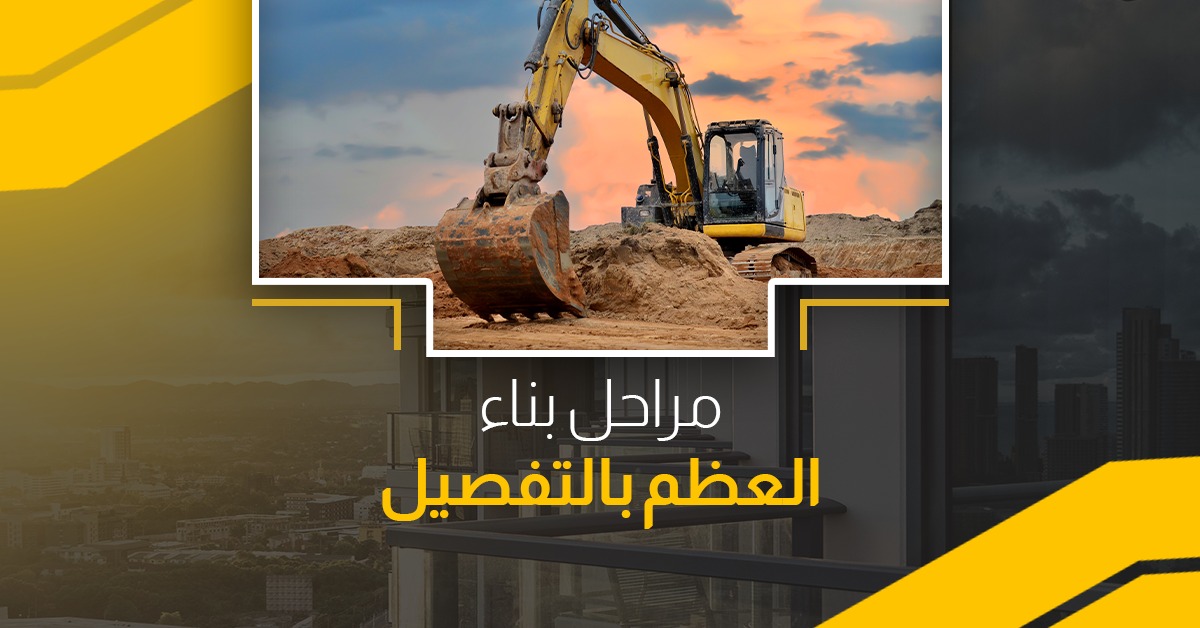
The Stages of Bone Formation in Detail
The construction of the skeleton is considered the fundamental step in building any structure, as it forms the main framework upon which residential and commercial buildings depend. Building the skeleton requires precision in planning and execution to ensure the highest levels of quality and sustainability. In this article, we will explore the detailed steps of skeleton construction and explain how to reduce the cost of building the skeleton without affecting quality, while adhering to modern construction standards in Saudi Arabia.
### Planning and Design: The Foundation of Skeleton Construction
The planning and design phase is one of the most critical stages in skeleton construction, as it determines the quality and sustainability of the building in the long term. This phase starts with identifying the project’s needs and requirements, followed by working with architects and designers to create plans that comply with building standards in Saudi Arabia. These plans should include all engineering details, from space distribution to ventilation, heating, and air conditioning systems.
During this phase, the cost of skeleton construction is also studied according to the allocated budget, helping in making informed decisions about the materials and techniques to be used. Additionally, the necessary permits from the relevant authorities must be obtained to ensure the project complies with local regulations. Architectural design plays a significant role in modern house skeleton construction, considering the integration of the latest building technologies to ensure energy efficiency and environmental sustainability.
The final step in this phase is preparing a detailed schedule for the project's stages, which helps control costs and avoid delays.
### Excavation and Ground Preparation
Once the planning is complete, the excavation and ground preparation phase begins, which is the first actual step in skeleton construction. This phase depends on the type of soil and the nature of the land on which the building will be constructed.
- **Soil Leveling and Testing:**
- The soil is tested by geotechnical engineers to ensure it can support the structural loads.
- The type of soil is determined, along with the need for treatment before construction begins.
- **Removal of Obstacles and Debris:**
- The site is cleared of any obstacles, such as trees, rocks, or old buildings.
- The ground is prepared to ensure the stability of the concrete foundations later.
- **Excavation Work:**
- Excavation is carried out according to the measurements specified in the engineering plans, whether for strip foundations, isolated foundations, or concrete slab foundations.
- The depth of the excavation is determined based on the type of construction. For example, commercial buildings require deeper excavations to ensure greater stability.
- **Ground Leveling and Soil Compaction:**
- The soil is leveled to prevent any unexpected settling after construction.
- Special equipment is used to compact the soil and improve its ability to bear loads.
- **Initial Insulation Layer:**
- Layers of sand and insulating materials are placed to prevent water leakage and protect the foundations from moisture.
### Pouring Foundations and Concrete Footings
The pouring of foundations and concrete footings is one of the most important stages of skeleton construction, as it bears the full weight of the building and determines its strength and stability.
- **Preparing Footings and Reinforcement:**
- Iron mesh is placed according to structural plans to strengthen the footings and foundations.
- When using concrete for skeleton construction, the appropriate type of steel should be used according to international quality standards.
- **Pouring Concrete Footings:**
- Concrete is poured into isolated foundations or concrete slabs using specialized concrete pumps.
- The concrete is left to cure completely before moving to the next phase.
- **Curing Concrete and Ensuring Quality:**
- Water is sprayed on the concrete to ensure proper curing.
### Building Load-Bearing Walls and Columns
Once the foundation phase is completed, skeleton construction with concrete begins with:
- **Pouring Concrete Columns:** These form the main support structure for the building.
- **Building Load-Bearing Walls:** These are constructed using materials like bricks or reinforced concrete.
- **Connecting Walls to Columns:** To achieve stability and strength.
### Creating Ceilings and Pouring Concrete
The process of creating ceilings and pouring concrete is one of the most crucial stages in skeleton construction, as it determines the strength and stability of the building's structural framework. This phase starts with installing wooden forms or metal scaffolding to form the ceilings, followed by reinforcing steel placement according to the engineering plans to ensure balanced load distribution. Then, reinforced concrete is poured, mixed according to specific standards to guarantee its strength and durability, with concrete vibrators used during pouring to avoid air pockets that could affect the structure's quality.
There are several types of ceilings that can be implemented, such as solid slabs suitable for traditional houses, Hordy slabs that reduce the load on columns, and post-tensioned slabs used in large projects to enhance load-bearing capacity. After pouring the concrete, the ceilings are left to gain the required strength, after which the forms are carefully removed, and the surface is checked for any cracks or structural issues.
### Implementing Insulation and Protection Work
Insulation and protection work is essential in skeleton construction, as it helps preserve the building’s quality and protects it from environmental factors such as water leakage, high temperatures, and humidity. Insulation starts from the foundations using moisture-resistant materials like bituminous rolls or water-resistant cementitious materials, which prevent water from seeping into the foundations and lower walls.
For ceilings and walls, thermal insulation is applied to maintain the building's temperature and reduce energy consumption. This is done by installing polystyrene or rock wool panels in the ceilings and exterior walls. Acoustic insulation is also added to shared walls and ceilings to reduce noise transmission, especially in residential buildings and hotels.
Additionally, external protection systems such as waterproof paints and insulation materials for bathrooms and kitchens are applied, ensuring the building’s sustainability and reducing future maintenance needs. These steps not only increase the building's efficiency but are also crucial for maintaining quality standards and ensuring residents' comfort.
### Basic Utilities Installation (Electricity and Plumbing)
After completing the basic structure, work begins on the installation of infrastructure systems, which includes:
- **Plumbing and Drainage Systems:** Installing pipes within walls and floors.
- **Electrical Systems:** Wiring and connecting cables according to approved specifications.
- **HVAC Systems:** Especially in modern homes that rely on advanced ventilation systems.
### Final Preparation and Basic Finishes
This phase includes:
- **Testing installations and ensuring their safety.**
- **Preparing external facades:** Using either traditional or modern materials such as glass or natural stone.
- **Preparing floors and ceilings** for final finishing work.
### Cost Comparison for Skeleton Construction Based on Project Type
The cost of skeleton construction varies significantly based on the project type, influenced by factors such as the building size, materials used, and architectural designs. For example, skeleton construction for small houses is less expensive compared to that for commercial buildings or residential complexes because smaller houses require less concrete and steel, and their infrastructure and finishing requirements are simpler.
However, when it comes to luxury homes or smart buildings, the cost increases significantly due to the use of high-quality building materials and the implementation of the latest construction technologies that enhance building efficiency and sustainability. In contrast, infrastructure projects and commercial buildings require large budgets due to the need for stronger foundations, complex concrete structures, and advanced electrical and mechanical systems.
Thus, choosing the right project type and design plays a key role in controlling costs, as developers and contractors can optimize expenses by carefully planning and selecting appropriate materials for each type of skeleton construction.
### How to Reduce Skeleton Construction Costs Without Affecting Quality?
If you're looking to reduce skeleton construction costs without compromising quality, here are some tips:
- **Choose construction materials carefully:** Use high-quality materials at reasonable prices.
- **Plan well before execution:** This helps avoid costly mistakes during work.
- **Rely on trusted contractors:** Ensuring the work is carried out according to required standards.
- **Balance quality and cost:** Choose an appropriate design without unnecessary additional costs.
### Conclusion
Skeleton construction for homes and commercial buildings is the cornerstone of any successful real estate project. By following the correct construction steps, selecting the right materials, and relying on modern technologies, a strong and sustainable structural framework can be achieved. Additionally, prior planning helps control the costs of skeleton construction and ensures efficient project execution.
Whether you are planning skeleton construction for luxury homes or large construction projects in Saudi Arabia, adhering to the correct stages guarantees project success and sustainability. Investing in high-quality materials, relying on professional contractors, and following modern building standards are key factors in maximizing the benefits of your real estate project. If you need consultation or professional skeleton construction services, feel free to contact us at Asas Al-Qimma, where we guarantee perfect execution according to the highest standards.
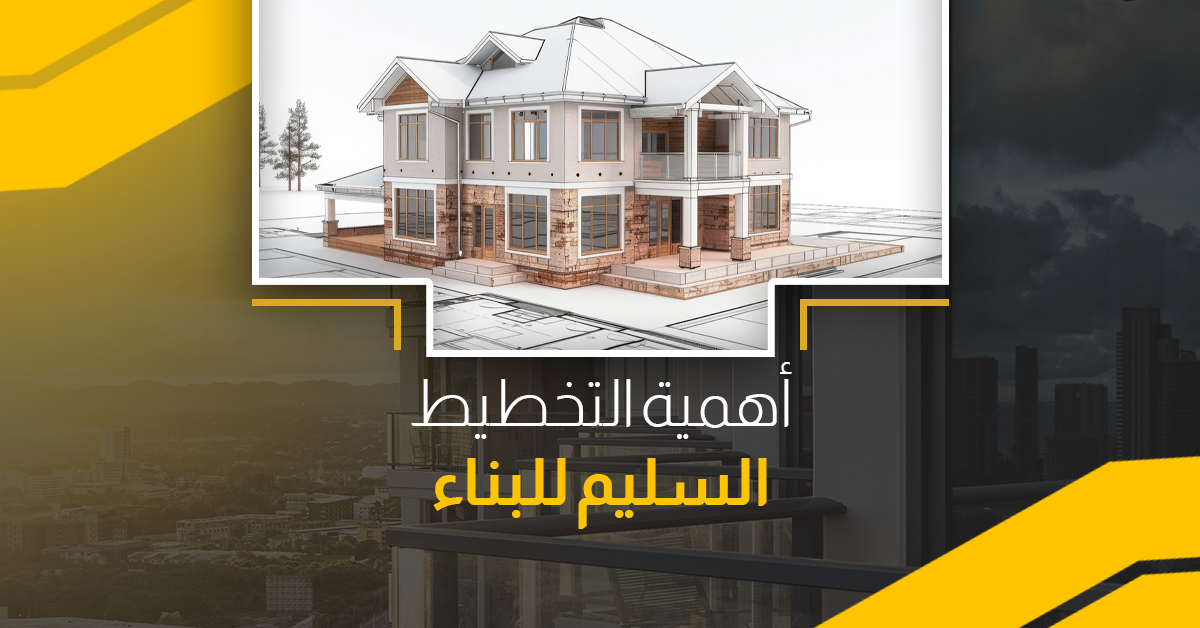
The Importance of Proper Building Planning
Proper building planning is considered a fundamental step to ensure the success of any construction project, whether it is the foundation of homes, commercial buildings, or residential complexes. Without a well-thought-out plan, projects can face issues such as delays in execution or unexpected cost increases.
In this article, we will discuss the importance of proper building planning and how it can help maximize the use of building materials, reduce construction costs, and outline the step-by-step process of building foundations to ensure successful and sustainable execution.
? First: What is Proper Building Planning
Proper building planning is the process of establishing a clear strategy that covers all aspects of the project, starting from designing plans, selecting appropriate building materials, to supervising execution and ensuring compliance with specifications.
Successful planning includes:
- Defining the purpose of the building (residential, commercial, or investment).
- Studying the cost of building foundations based on the available budget.
- Choosing the right design, whether for modern homes or classic houses.
- Selecting materials, such as reinforced concrete, to ensure durability and sustainability.
- Creating an accurate timeline for each stage of the building process.
? Second: Why is Proper Building Planning Necessary
Good planning before construction helps in:
1. Controlling Costs:
A clear plan allows for an accurate estimation of the cost of building the foundation, helping to avoid unexpected expenses. Identifying necessary materials in advance prevents budget wastage on unnecessary purchases.
2. Ensuring Building Quality:
Choosing the right method, such as reinforced concrete foundations, ensures structural strength and resilience to environmental factors. Adhering to required engineering specifications contributes to meeting safety and quality standards.
3. Reducing Risks and Errors:
Studying the project in advance helps avoid potential problems such as delays in material delivery or mismatched designs. Proper planning ensures that human resources and equipment are available at the right time.
4. Building Sustainability and Extended Lifespan:
Using high-quality building materials reduces the need for frequent maintenance. Executing the building process step by step according to engineering best practices ensures the building’s strength and safety for decades.
Third: Step-by-Step Process of Building Foundations with Proper Planning
When discussing foundation construction for homes or commercial buildings, following the correct steps ensures smooth and efficient project execution.
1. Planning and Design:
- Determine the type of building (residential, commercial, investment).
- Prepare appropriate engineering designs, whether for modern homes or classic houses.
- Study the cost of the foundation and set the budget based on the project type (luxury, medium, or economical).
2. Selecting Building Materials:
- Choose foundation materials according to technical specifications.
- Use reinforced concrete for buildings requiring high durability.
- Select appropriate materials for smart homes that incorporate energy-saving technologies.
3. Preparing the Land and Infrastructure:
- Level the ground and prepare foundations.
- Install essential pipes and connections for electricity and plumbing.
- Ensure the infrastructure is suitable for building foundations for residential complexes or ready-made homes.
4. Executing the Concrete Structure:
- Pour foundations using reinforced concrete to ensure the building's strength.
- Raise columns and ceilings according to the approved engineering design.
- Ensure compliance with safety and quality standards during execution.
5. Final Finishes:
- After completing the foundation construction step by step, work begins on insulation and internal/external finishes.
- Install windows and doors, ensuring the design aligns with the client's needs.
- Prepare the smart infrastructure if the project involves smart homes.
Fourth: How to Reduce Foundation Construction Costs Without Compromising Quality
Many people aim to reduce foundation costs without sacrificing quality and durability. Here are some tips:
- **Accurate Planning:** Avoid frequent changes to the design, as they can unexpectedly increase costs.
- **Choosing Suitable Materials:** Use high-quality materials at a reasonable price.
- **Take Advantage of Offers and Discounts:** Look for suppliers offering the best prices for building materials.
- **Hire Trusted Contractors:** Work with specialized companies like Asas Al-Qimmah for contracting services, which offer integrated solutions with high quality at a reasonable cost.
Fifth: The Role of Planning in Large-Scale Projects and Commercial Buildings
When constructing foundations for large projects such as hotels or commercial towers, planning is crucial to ensure the work is completed on time and within the set budget.
Building foundations for commercial buildings requires detailed engineering studies to ensure comfortable spaces and integrated facilities that meet the needs of businesses and tenants.
Summary Paragraph
Proper building planning is a key factor in ensuring the success of construction projects, whether for luxury homes or cost-effective foundations. Through careful planning, one can control foundation costs, achieve building quality, and reduce potential risks during execution. This includes following the step-by-step foundation construction process, from designing plans to preparing the land and selecting the appropriate materials, to completing the structure and final finishes. Good planning also ensures the sustainability of the building and increases its lifespan, making it a successful long-term investment. Whether you’re building foundations for modern homes, residential complexes, or commercial buildings, collaborating with specialized companies like Asas Al-Qimmah guarantees professional execution according to the highest engineering standards, with the best balance between quality and cost.
Proper planning is the cornerstone of any successful construction project. It not only ensures control over foundation construction costs but also helps achieve the highest levels of quality and sustainability. Whether planning foundations for ready-made homes or commercial buildings, following the step-by-step foundation construction process and collaborating with specialized companies like Asas Al-Qimmah guarantees perfect results with the best standards.
Do you have a construction project and are looking for the best solutions?
Contact us at Asas Al-Qimmah for professional consultations and integrated construction services!